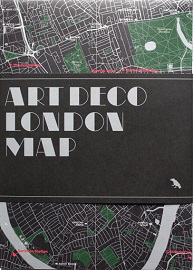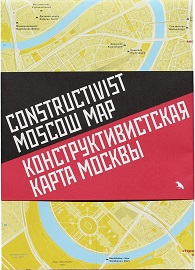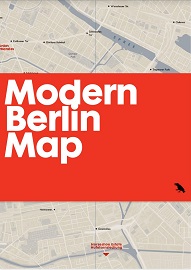Main author
Michael BrooksArchitecture maps - review
Published by Blue Crow Media (2016)
Contents |
[edit] Introduction
Following on from their ‘Brutalist London map’ (reviewed here), the independent publisher Blue Crow Media have expanded their portfolio, with four new architecture maps. Each double-sided map is beautifully designed and presented, and was clearly researched and compiled by enthusiasts.
Regardless of whether you take them out on a walking tour, or simply use them to decorate a coffee table, these are well worth getting hold of.
[edit] Art Deco London map
This gorgeous black-and-silver map details some of the best examples of London’s Art Deco, which flourished in the 1920s and 30s. Art Deco buildings were designed by some of the renowned artists of the time, such as Eric Gill and Serge Chermayeff.
The versatility and adaptability of the style is evidenced by the range of structures included on the map, from tube stations and cinemas, to factories, government buildings and swimming pools.
[edit] Constructivist Moscow map
Moscow is perhaps less familiar or documented in terms of its architectural history, and this map highlights many fascinating and intriguing examples of the creative and avant garde Constructivist form.
Typical of the early Soviet era, Constructivism was a rejection of traditional ornamentation and instead embraced geometrical forms, straight lines and angles in a way that inspired the more familiar style of Brutalism.
Despite the nostalgia afforded these buildings, it is perhaps inevitable that many of them will be demolished in the near future, lending the map a slight hint of sadness.
[edit] Brutalist Washington map
This map highlights one of the finest concentrations of Brutalist architecture in the world, in Washington D.C.
The reason for this abundance of Brutalism in the post-war era was a substantial renewal strategy for large urban areas as well as a federal government plan to construct new buildings to house its agencies which were not to be identifiable from their architecture. Brutalism, being materially economical and with its raw ambiguity and stark, sometimes imposing, form was seen as the ideal choice.
Particular highlights are the API Building and the J. Edgar Hoover Building, both of which are under threat of demolition along with many others across the city.
[edit] Modern Berlin map
One of the most striking aspects of the German capital, however unsurprising given the wartime devastation, is the modernity of its architecture.
After Albert Speer’s plans for a Third Reich ‘Germania’ were reduced to rubble by Allied bombing, the city was split in two, resulting in some disparate architectural developments – from the pre-fabricated ‘plattenbau’ social housing to the futuristic Fernsehturm TV tower, and ‘sci-fi Brutalism’ such as the Bierpinsel (see below).
While the post-reunification modernism has its detractors, especially regarding the rebuilt Potsdamer Platz, the map picks out genuinely impressive works from the likes of Peter Eisenman and Norman Foster, which combine to give the impression of an eclectic and engaging architectural city.
For more information and to purchase the maps, please see Blue Crow Media.
[edit] Find out more
[edit] Related articles on Designing Buildings Wiki
Featured articles and news
Amendment to the GB Energy Bill welcomed
Move prevents nationally-owned energy company from investing in solar panels produced by modern slavery.
Gregor Harvie argues that AI is state-sanctioned theft of IP.
Heat pumps, vehicle chargers and heating appliances must be sold with smart functionality.
Experimental AI housing target help for councils
Experimental AI could help councils meet housing targets by digitising records.
New-style degrees set for reformed ARB accreditation
Following the ARB Tomorrow's Architects competency outcomes for Architects.
BSRIA Occupant Wellbeing survey BOW
Occupant satisfaction and wellbeing tool inc. physical environment, indoor facilities, functionality and accessibility.
Preserving, waterproofing and decorating buildings.
Many resources for visitors aswell as new features for members.
Using technology to empower communities
The Community data platform; capturing the DNA of a place and fostering participation, for better design.
Heat pump and wind turbine sound calculations for PDRs
MCS publish updated sound calculation standards for permitted development installations.
Homes England creates largest housing-led site in the North
Successful, 34 hectare land acquisition with the residential allocation now completed.
Scottish apprenticeship training proposals
General support although better accountability and transparency is sought.
The history of building regulations
A story of belated action in response to crisis.
Moisture, fire safety and emerging trends in living walls
How wet is your wall?
Current policy explained and newly published consultation by the UK and Welsh Governments.
British architecture 1919–39. Book review.
Conservation of listed prefabs in Moseley.
Energy industry calls for urgent reform.































